Last updated on January 10, 2024
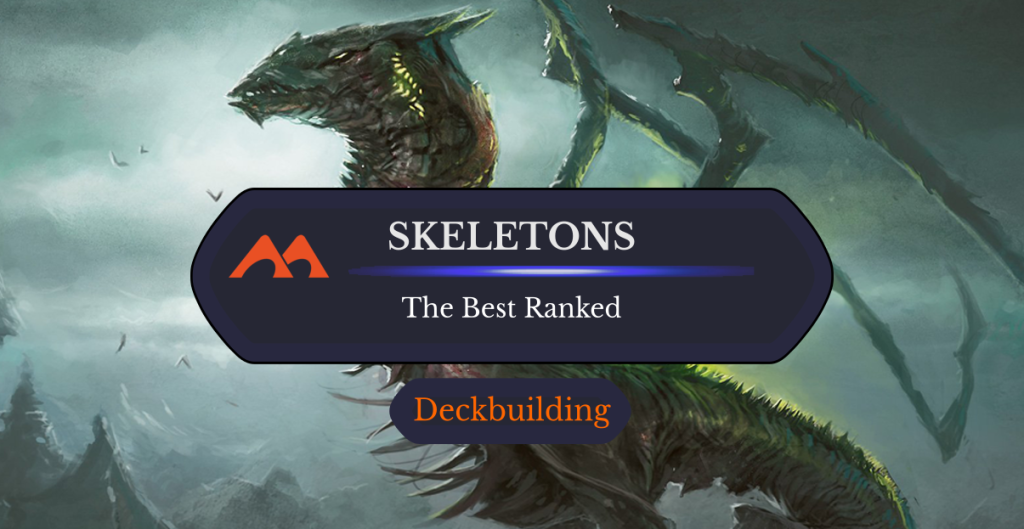
Skithiryx, the Blight Dragon | Illustration by Chippy
Evil necromancers and powerful planeswalkers have been resurrecting the dead to do their bidding for time immemorial. A handful of creature types in Magic represent the no-longer-gone-but-not-forgotten warriors. Zombies tend to represent physical reanimation while spirits are the game’s iconic “ghost” creature type.
But where do skeletons fit in? They’re not fully zombies having lost some amount of flesh and muscle, but they’re still reanimated bodies bent to their dark masters’ will. Skeletons fit a unique mechanical role, different from zombies and other undead.
Let’s jump right in and see why!
What Are Skeletons in MTG?

Lightning Skelemental | Illustration by Nicholas Gregory
Skeleton is a creature type in Magic. Skeletons are mainly found in black, with some splashing into the other four colors. Only four skeletons don’t include black in their identity: Demilich, Flameskull, Golgari Grave-Troll, and Viashino Skeleton.
Skeletons typically have access to the retired regenerate mechanic. More recent skeletons have seen this replaced with a similar theme. Either the “new” wording of regenerate found on cards like Drudge Sentinel, or the ability to easily return from the graveyard like Reassembling Skeleton.
Skeletons have been in Magic since its inception. The common Drudge Skeletons and uncommon Wall of Bone are the original skeletons from Alpha. I’ll use them as a weathervane of sorts to compare the best skeletons in the game.
#22. Rot Farm Skeleton
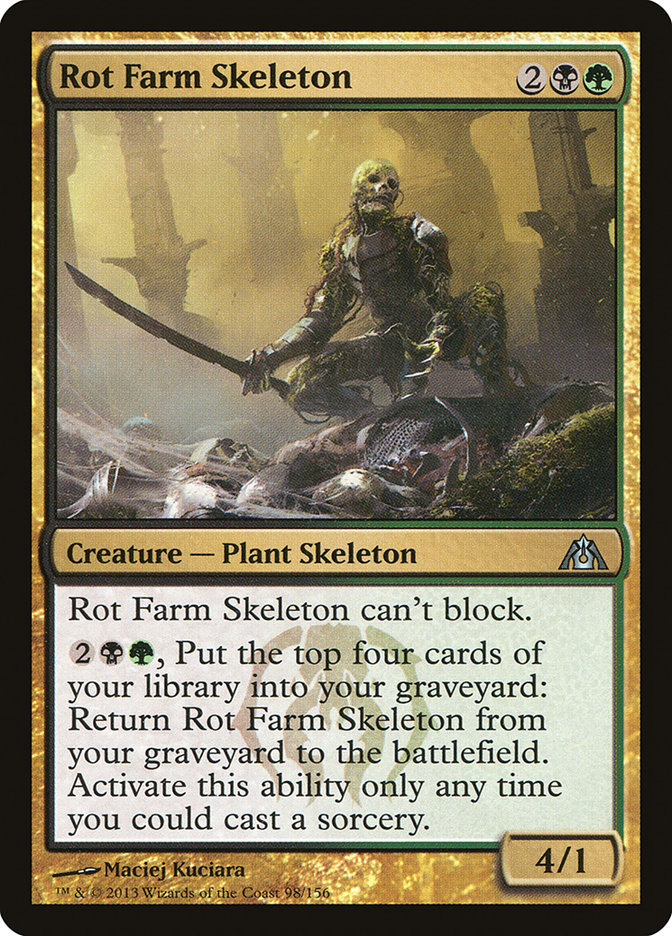
Rot Farm Skeleton was a lot of fun back in Dragon’s Maze’s Standard environment. A 4/1 that can’t block isn’t great value for four mana, but its reanimation ability is what I’d call “better dredge.”
Returning this skeleton to the battlefield by milling four cards was an upside in Golgari () decks of the time, milling into scavenge cards or even another Rot Farm Skeleton. Its biggest drawback was that it cost another four mana. Not quite as good as dredge’s price of “free.”
#21. Skeletal Vampire
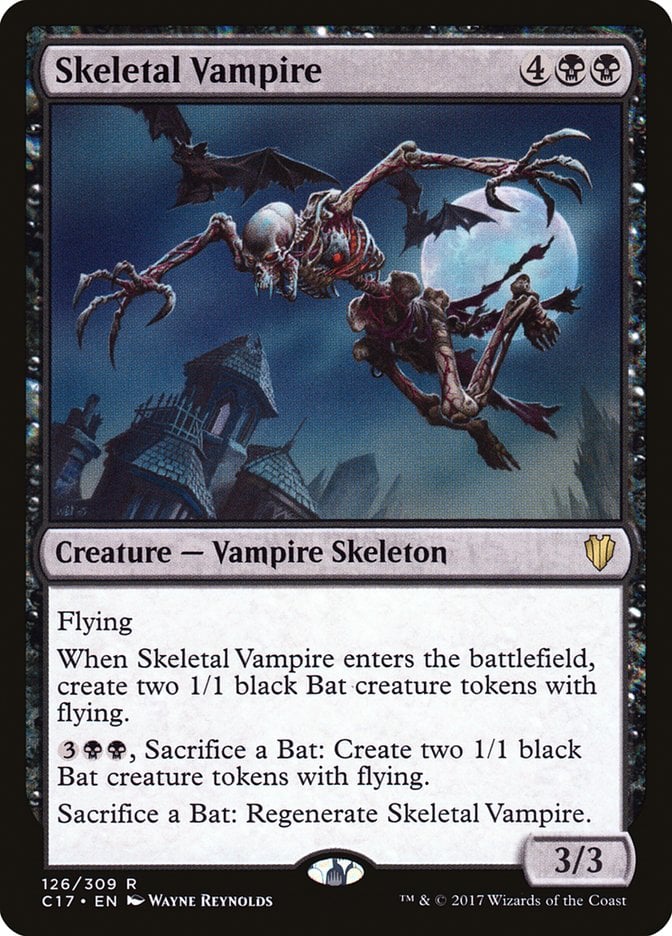
Guildpact’s Skeletal Vampire is a, you guessed it, vampire skeleton creature. Six mana for a 3/3 flier might seem a bit overcosted, but its mana-less regeneration ability guarantees you’ll have two regenerates ready to go immediately.
And for another five mana you can bank some extra bats for more regeneration. Skeletal Vampire is moderately difficult to remove and enables some free sacrifices, so it sees play in Commander and other slow formats.
#20. Death Tyrant
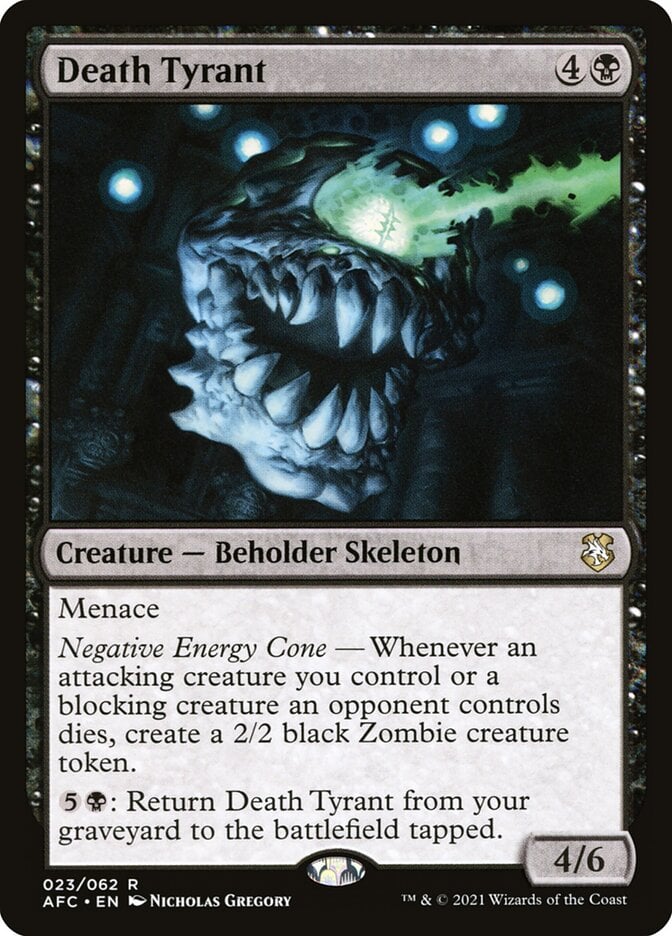
Death Tyrant was printed in Forgotten Realm’s Commander decks and lives up to its menace ability. It can return to the battlefield at instant speed, surprising your opponents with its Negative Energy Cone ability after they’ve declared blockers.
#19. Underworld Sentinel
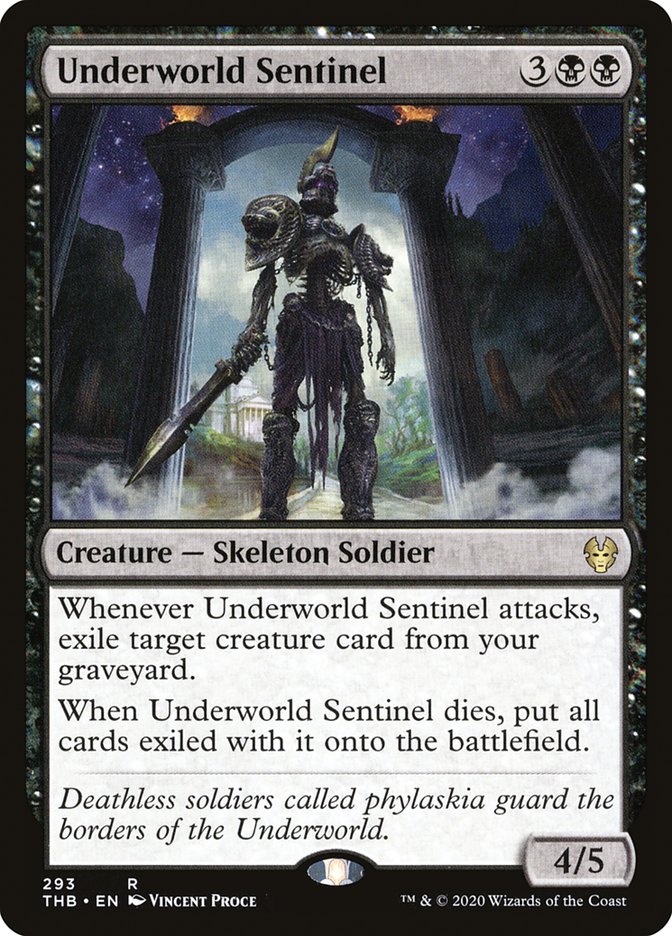
Underworld Sentinel is a unique skeleton that doesn’t keep itself alive but returns other creatures from your graveyard to the battlefield. It makes a good top-end card for a skeleton deck, coming with a solid body that you can build around to consistently kill it right when you’re ready.
#18. Rimebound Dead

A snowy upgrade to Drudge Skeletons, Rimebound Dead squeezes a little extra value by virtue of being a snow creature. It costs one less mana to cast.
Its regenerate can be activated with a snow mana of any color, meaning it has more diverse utility than Drudge Skeletons, but just by a bit. It’s still a 1/1 with no other abilities, but it’ll at least stick around and block a few attacks.
#17. Carrionette
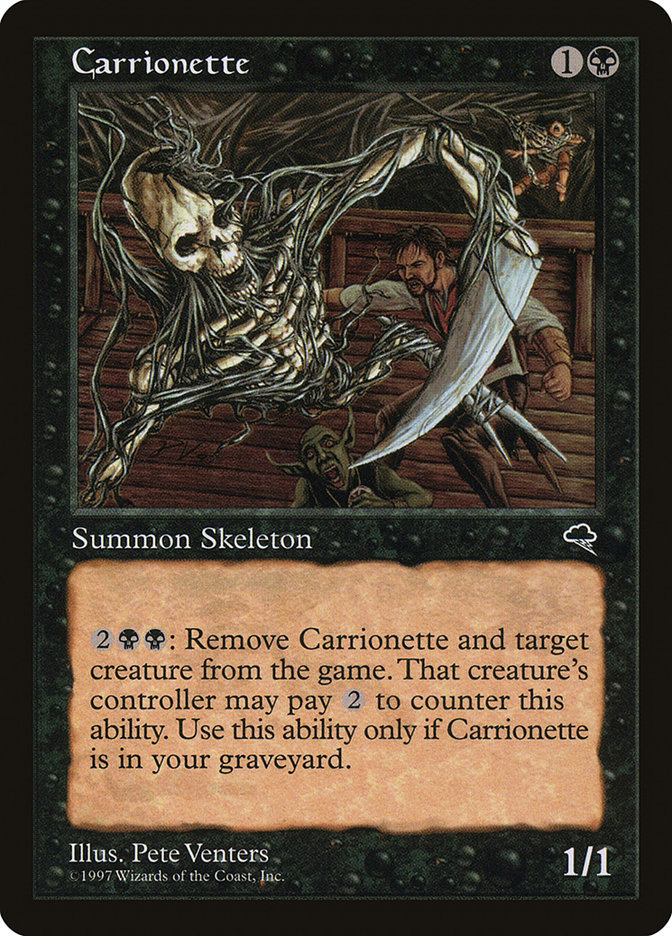
Carrionette is a weird skeleton from Onslaught with a built-in exile removal ability. It exiles itself from the graveyard along with another creature unless its controller pays two. Notably, exiling the Carrionette is part of the effect and not the cost, so it won’t leave the graveyard until your opponent decides if they’ll pay or not.
#16. Cult Conscript

Cult Conscript feels similar to other black 1-drops that keep on coming back, though getting non-Skeletons to die is harder than some conditions. With reliable activation, these creatures put in a lot of work.
#15. Skeleton Scavengers

Stronghold’s Skeleton Scavengers is a 3-mana creature that enters the battlefield as a 1/1 with the potential to get stronger as it regenerates. It can quickly become a mana sink as it grows, but I’ve seen it used as a counter generator in Ghave, Guru of Spores decks.
It’s important to note that just activating the regeneration ability doesn’t exactly mean the creature has been “regenerated.” It still needs to die in some way for regeneration’s replacement effect to actually resolve.
#14. Spawning Pool
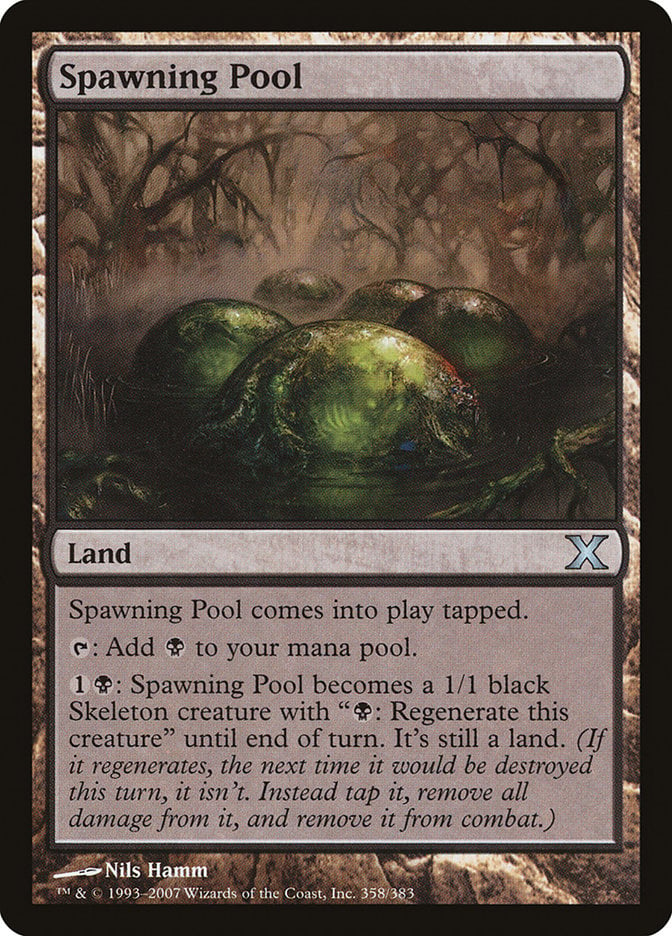
Spawning Pool is a land that turns into a Drudge Skeletons when you need it! This isn’t necessarily useful, but you can animate it by paying one and a black from other sources in a pinch, declaring it as a blocker, then tapping the Spawning Pool to regenerate itself. A conditional card, and kind of weak for an uncommon.
#13. Carnage Gladiator
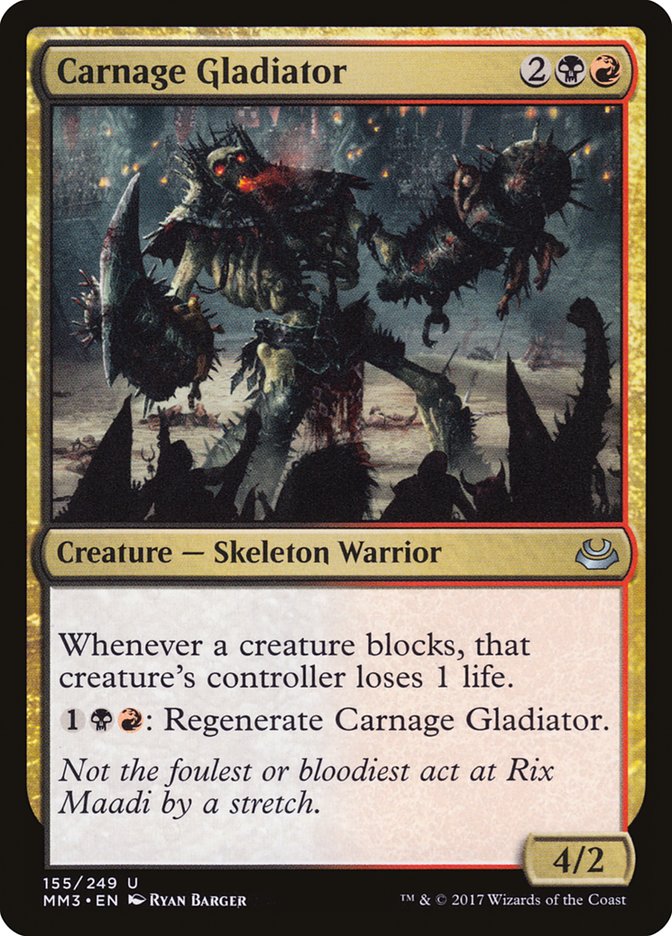
Carnage Gladiator is a Rakdos () skeleton that punishes players for blocking. Its 4/2 body for four is about average considering its ability, and three mana to regenerate it lets you swing in every turn without fear of losing it.
This is a solid uncommon and a fun card to build around, but it won’t see competitive play any time soon.
#12. Duty-Bound Dead
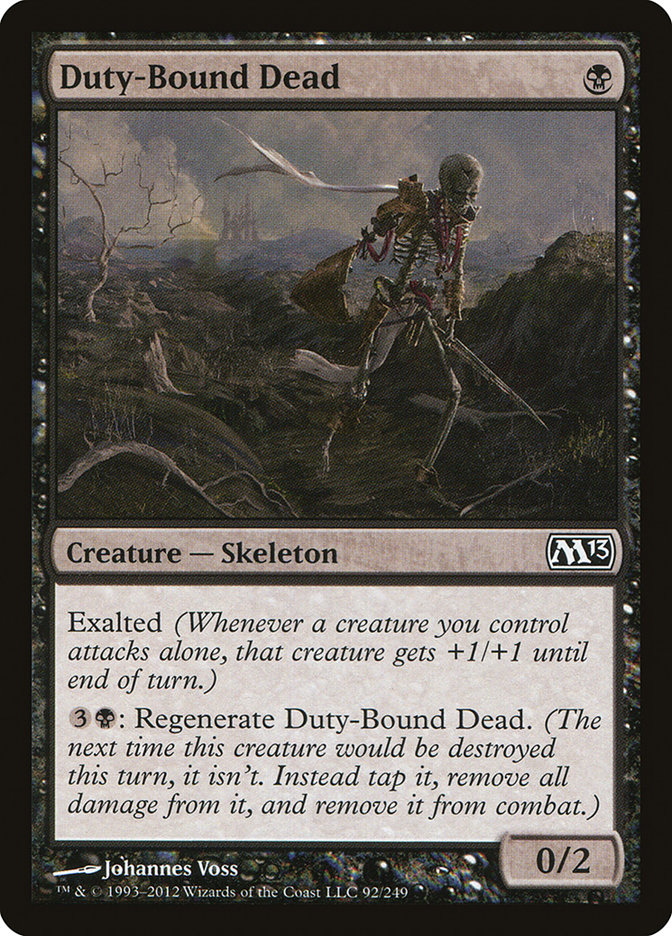
I had a lot of fun with Core Set 2013’s exalted theme and built an Orzhov () deck based around those cards. Duty-Bound Dead was a great turn 1 play.
While four mana to regenerate isn’t super cheap, it was nice to have a guaranteed blocker and exalted permanent on the battlefield. It also usually wasn’t worth my opponent’s removal spells.
#11. Bladewing, Deathless Tyrant
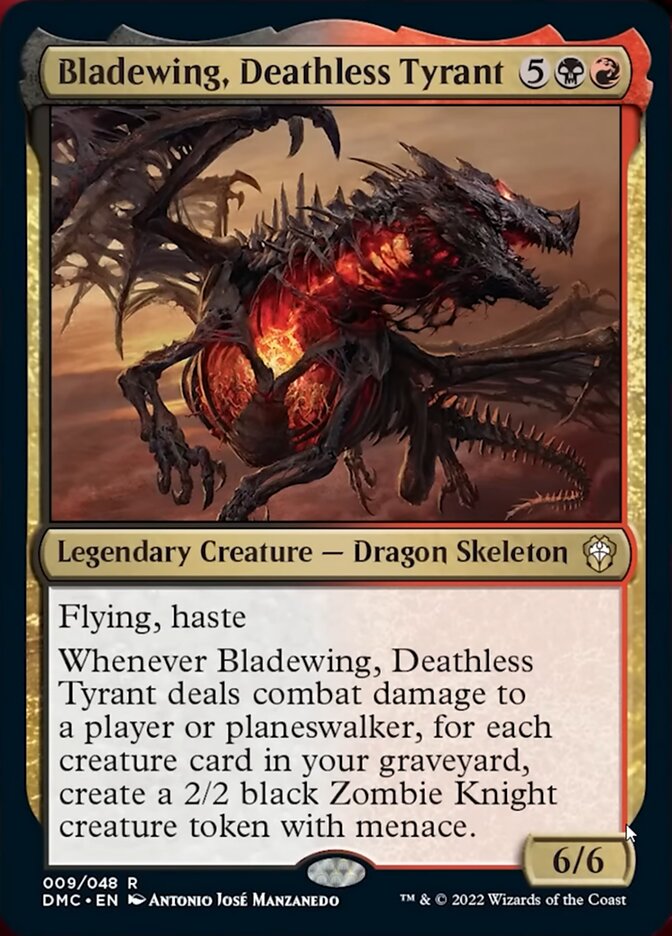
A few great things are going on here. Bladewing, Deathless Tyrant, is big, evasive, and can create a bunch of evasive creature tokens right away. Connecting for damage should put you solidly ahead, and if you’ve been pitching cards well, you’ll be getting an army prepared to deal lethal damage real quick.
#10. Champion of Stray Souls
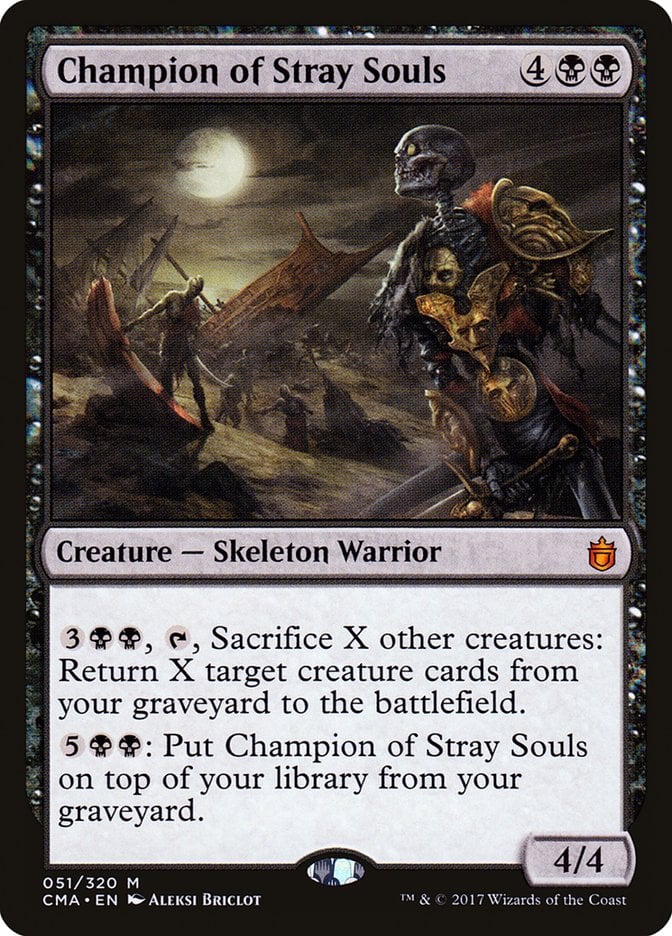
The mythic rare Champion of Stray Souls has two expensive abilities on top of an already expensive mana cost. It typically only sees play in Commander decks, useful in the late game when you have access to a ton of mana and a graveyard full of creatures.
#9. Skeleton Ship
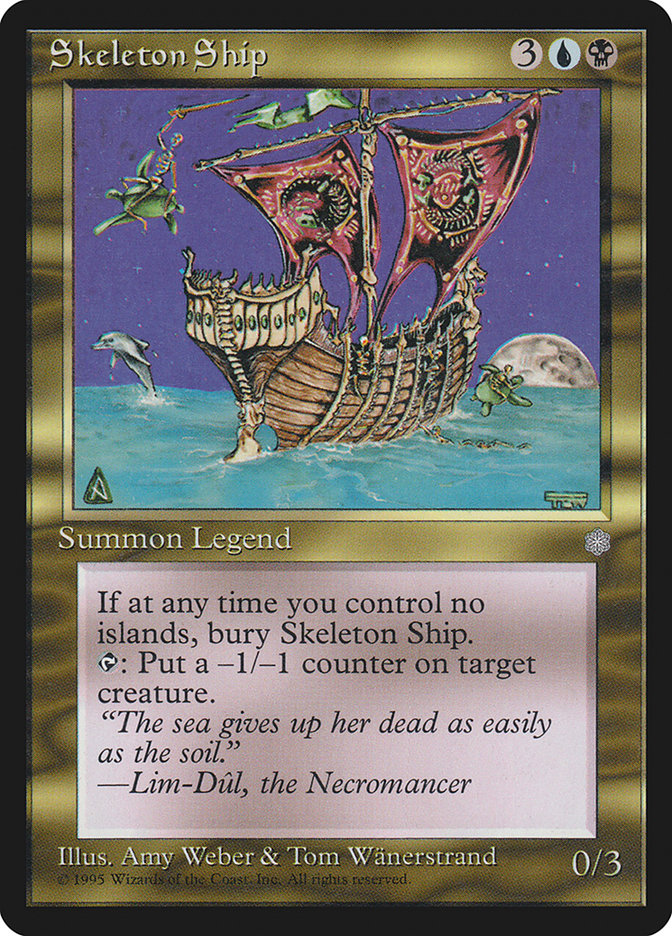
Skeleton Ship was the first legendary skeleton (though it only got this type after the Grand Creature Type Update). The only Reserved List skeleton, this is a popular choice for skeleton tribal EDH decks and makes a great commander for -1/-1 counter themes.
Five mana for an 0/3 body with an existence conditional to your mana base isn’t very strong by today’s standards, but it wins points in the flavor category. It’s also the only multicolored skeleton legend.
#8. Reassembling Skeleton
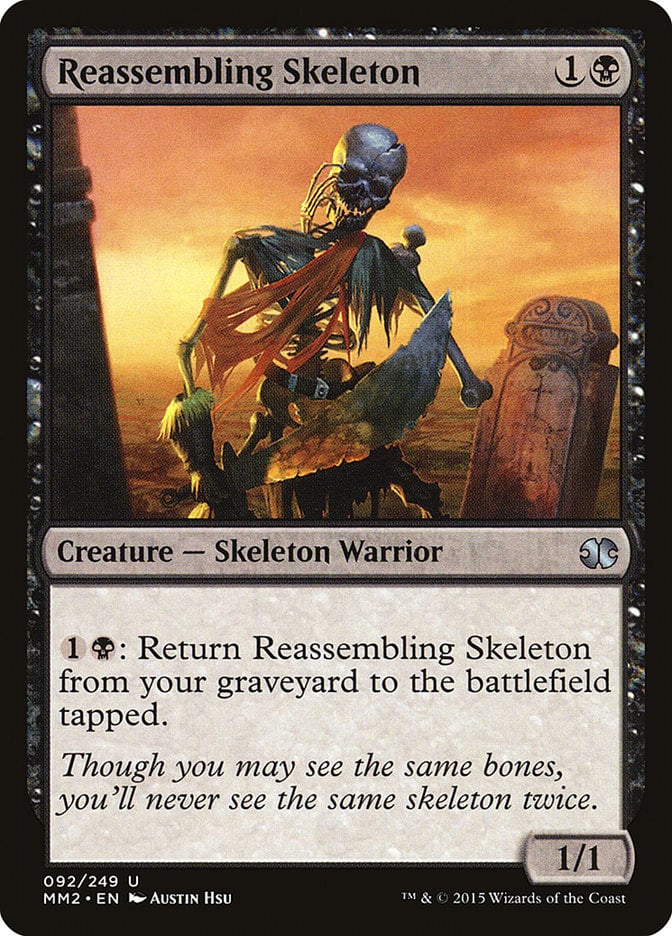
Reassembling Skeleton is a classic choice for any deck that needs a single creature to sacrifice and reanimate multiple times. You’ll basically always have access to this skeleton for a measly two mana.
The best part is that this can return to the battlefield at instant speed, but entering tapped means you won’t use it as a surprise blocker. This is a staple at uncommon in a wide variety of reanimator and sacrifice themed decks.
#7. Dimir House Guard
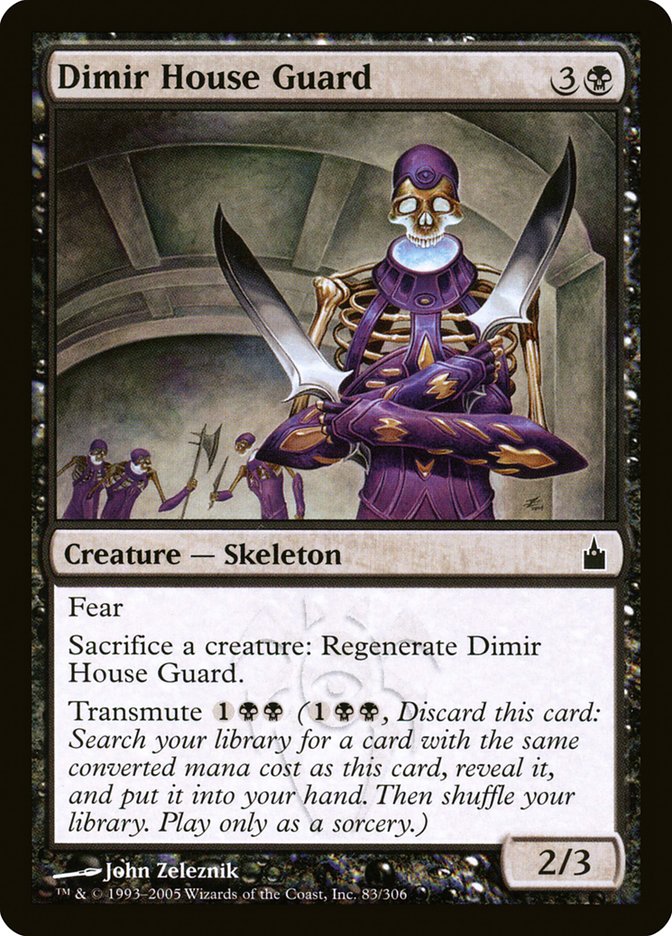
Dimir House Guard is a popular skeleton for combo and aristocrats strategies alike. Its transmute ability lets you search up any 4-mana spell. It’s also hard to counter with a traditional Negate or Counterspell since this is an ability and not a spell.
The Guard’s regenerate ability is useful, but it’s best used as a free sacrifice outlet while you control things like Blood Artist and Butcher of Malakir. On top of all that it’s a 2/3 creature with built-in evasion in the form of fear. It’s great value for four mana, especially at common rarity.
#6. Gutterbones
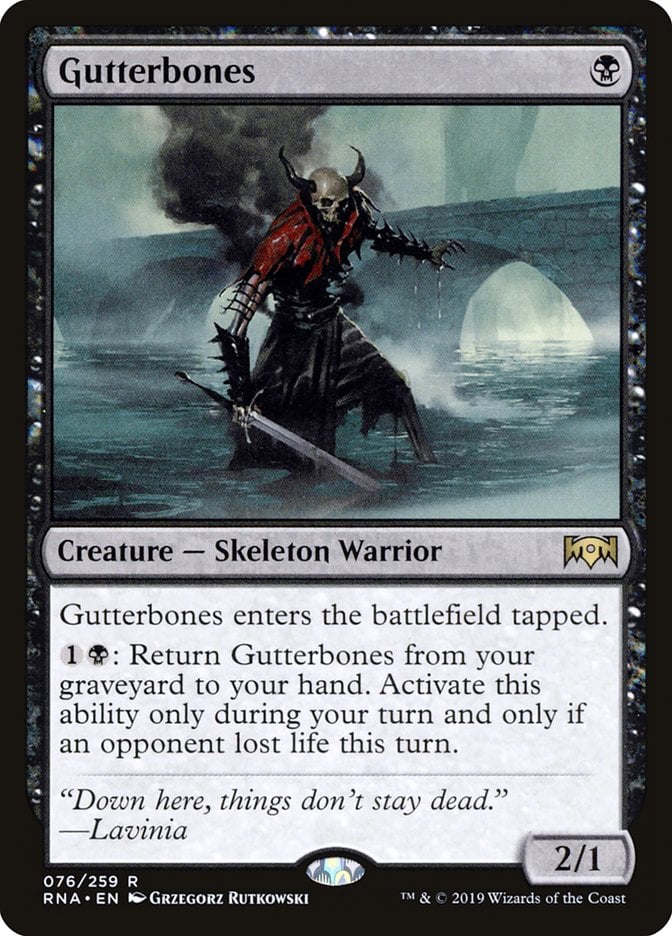
Ravnica Allegiance’s Gutterbones is a rare skeleton that saw a fair amount of play in the Standard of its day. It played well with Rakdos’ spectacle mechanic from that set. With lots of options in the card pool to ping bits of damage off your opponent (notably Skeleton Archer), it was a cheap body you could return to your hand over and over again with great consistency.
#5. Lightning Skelemental
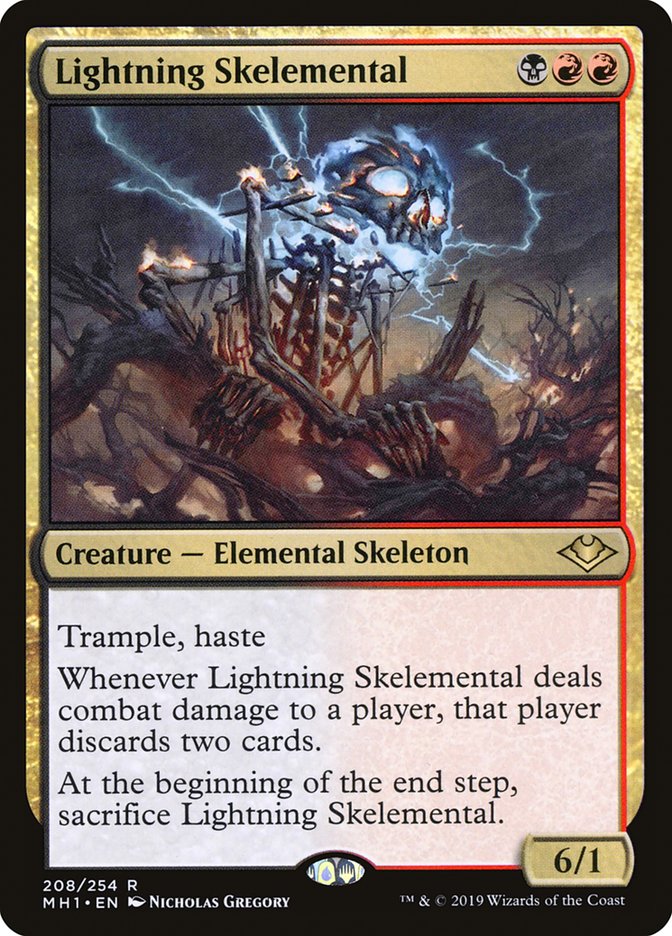
Lightning Skelemental combines two of my favorite cards into one neat trick. Ball Lightning mixed with Blightning, this skeleton is a great way to sneak a lot of damage and disrupt your opponent’s hand for just three mana!
While Lightning Skelemental can’t regenerate itself to stick around (in fact, it makes sure you sacrifice it at the end of the turn), its cheap mana cost makes it a great target for reanimation spells like Unearth.
#4. Demilich
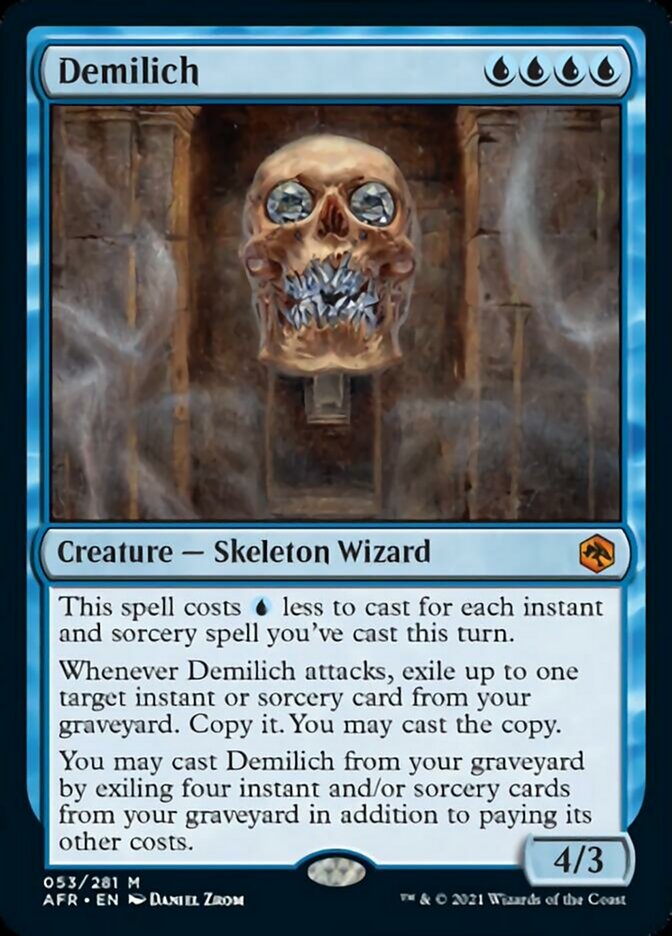
Forgotten Realms’ Demilich made quite the splash in Standard. A mono-blue skeleton, this skeleton “regenerates” by allowing you to cast it from your graveyard in a style similar to Theros: Beyond Death’s escape mechanic. Its cost is also reduced by one blue for each instant or sorcery you’ve cast so far this turn, meaning you often see it cast for free.
This card also “flashbacks” a spell from your graveyard whenever it attacks, letting you set up some spell-heavy turns. And that spell cast from your ‘yard counts towards the Demilich’s cost-reduction.
Not to mention that you can always just cast it in the second main phase for a reduced cost if it dies in combat this turn. Assuming you have a sufficiently full graveyard.
#3. Golgari Grave-Troll
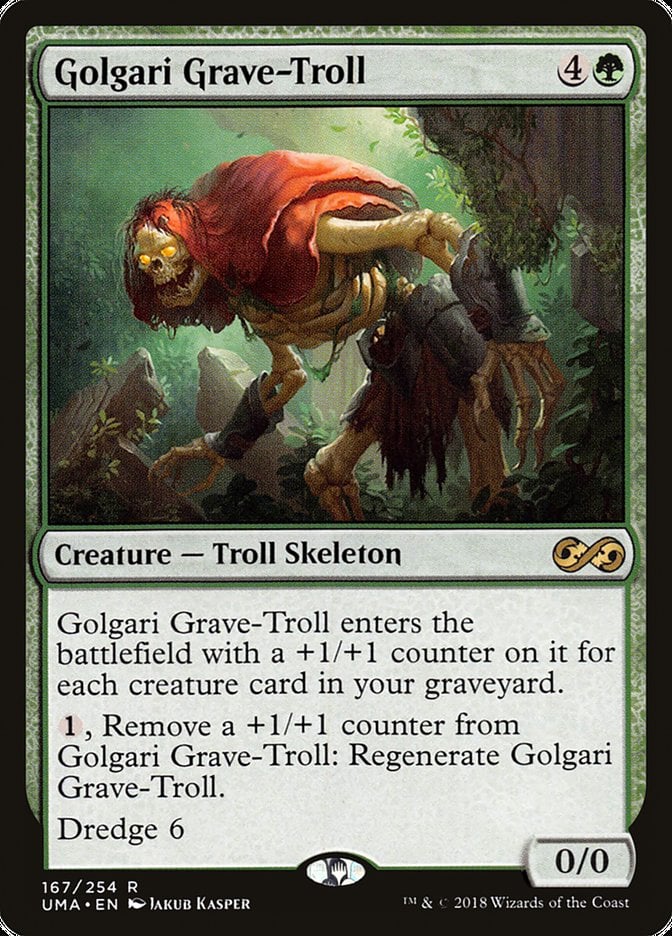
Golgari Grave-Troll is a powerful mono-green skeleton from the original Ravnica set. It was an absolute menace in reanimator decks across formats, its dredge ability letting you fill your graveyard quickly and then hitting the field with a huge hard-to-remove body in just a few turns.
I love the flavor of how this card regenerates. It sloughs off parts of it body as it takes damage until there’s nothing left. It’s the only skeleton to be banned in a format (Modern) and restricted in another (Vintage).
Fun fact: if you reanimate Golgari Grave-Troll directly from your graveyard, it counts itself as one of the creatures in your ‘yard for the purposes of determining its +1/+1 counters.
#2. Tinybones, Trinket Thief
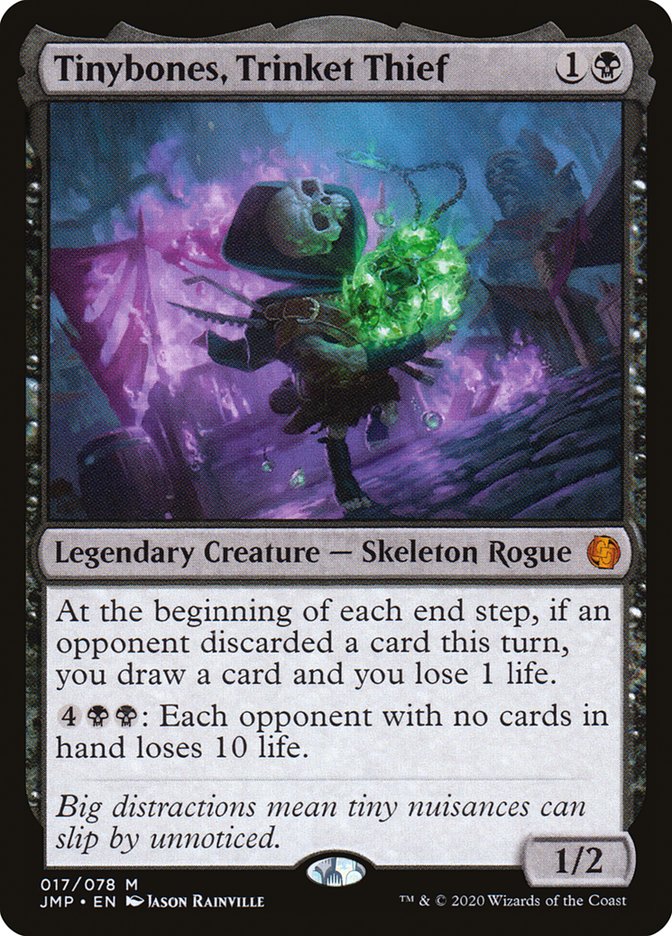
Tinybones, Trinket Thief comes from Jumpstart and is a popular choice as a commander. Tinybones is the latest in an unofficial cycle of legendary creatures that can hit your opponents for 10 life at a time, alongside Lathril, Blade of the Elves.
While this skeleton’s abilities don’t necessarily synergize with other skeletons, the value it can generate is still worth it’s cheap mana cost. It makes a good basis for any mono-black deck with access to a lot of discard spells. These types of control decks often need sustainable blockers in the early game, and there’s no reason a swarm of regenerating skeletons can’t fill this need.
#1. Skithiryx, the Blight Dragon
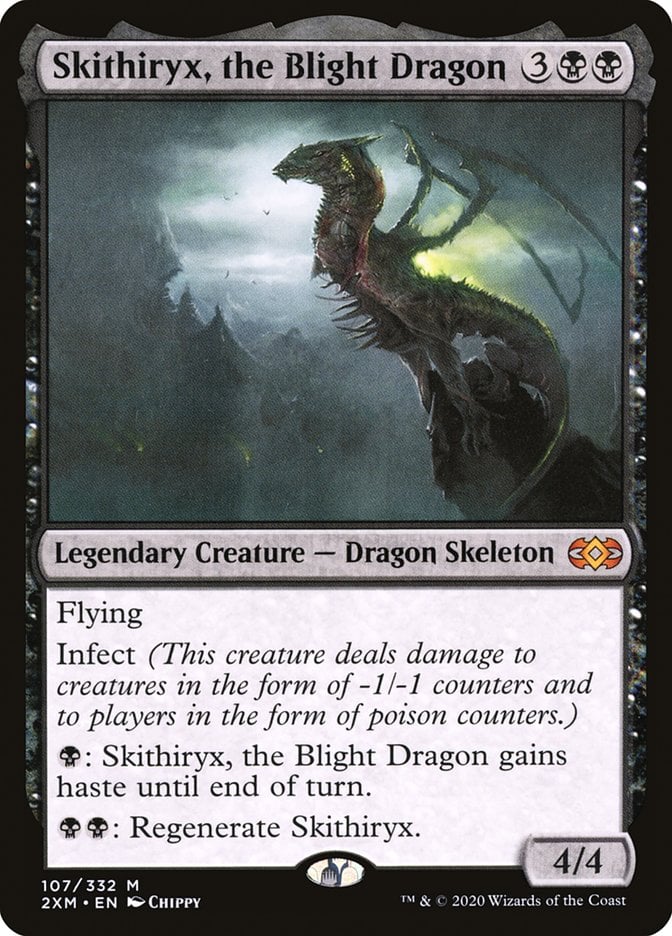
Skithiryx, the Blight Dragon is by far the most powerful skeleton creature on the market. A 4/4 with flying and infect for five mana is a huge threat, especially when you can swing the turn it hits the field by giving it haste.
Skithiryx can also regenerate for two black mana, meaning it’s at least somewhat protected from removal. It can even effectively “trade up” against creatures in combat.
A lot of skeleton tribal Commander decks choose Skithiryx, the Blight Dragon as their commander. While it doesn’t interact with other skeletons specifically, it’s undoubtedly the leader of any skeleton horde.
The Best Skeleton Payoffs and Synergies
Sacrifice Effects
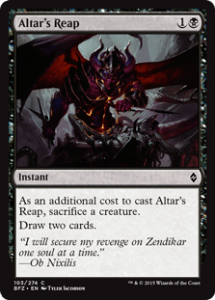
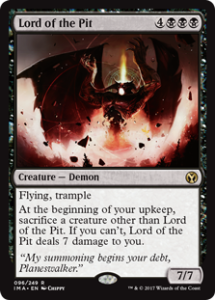
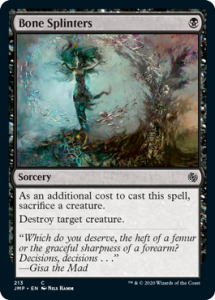
Skeletons have recently had a nasty habit of coming back from the graveyard, so they make great creatures to repeatedly sacrifice. Use Reassembling Skeleton in tandem with Altar's Reap and Bone Splinters to generate advantage and control the battlefield, or keep it around for a constant offering for your Lord of the Pit.
Skeleton Lords
Skeletons only have two lords that buff the entire tribe, but Death Baron and Death-Priest of Myrkul are both powerful necromancers to lead your clattering army. Granting deathtouch to your regenerating skeletons makes them really effective blockers, and the Death-Priest’s triggered ability is a consistent way to fill your board with bones.
Skeletonize
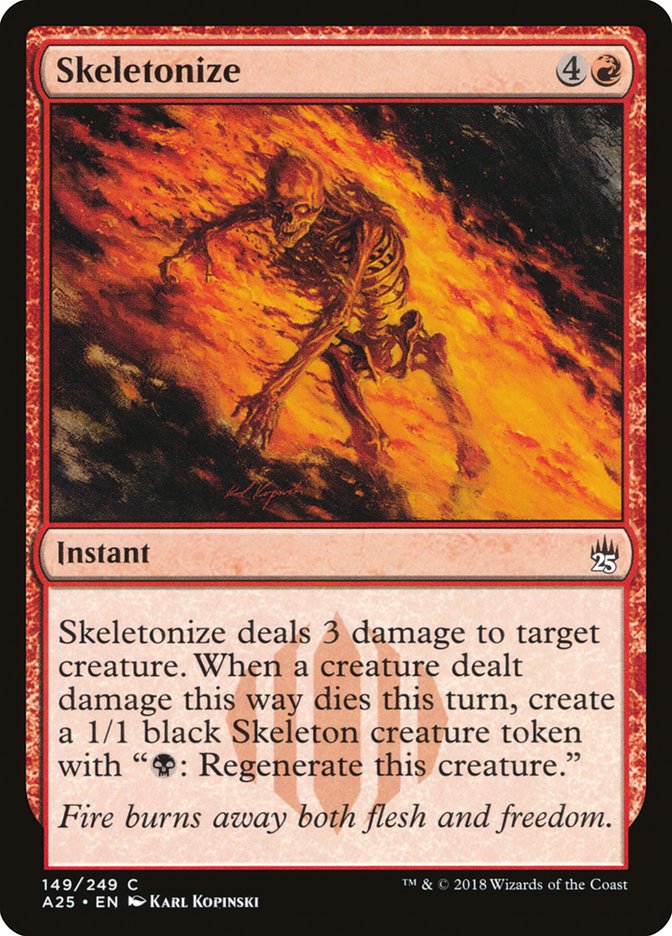
Skeletonize is a 5-mana red burn spell that turns your opponent’s creature into a token Drudge Skeleton for you. I think about this as two mana for the three damage and three mana for the instant-speed token. This isn’t incredibly valuable, but it also isn’t half bad if you’re already committing to a skeleton theme.
Wrap Up
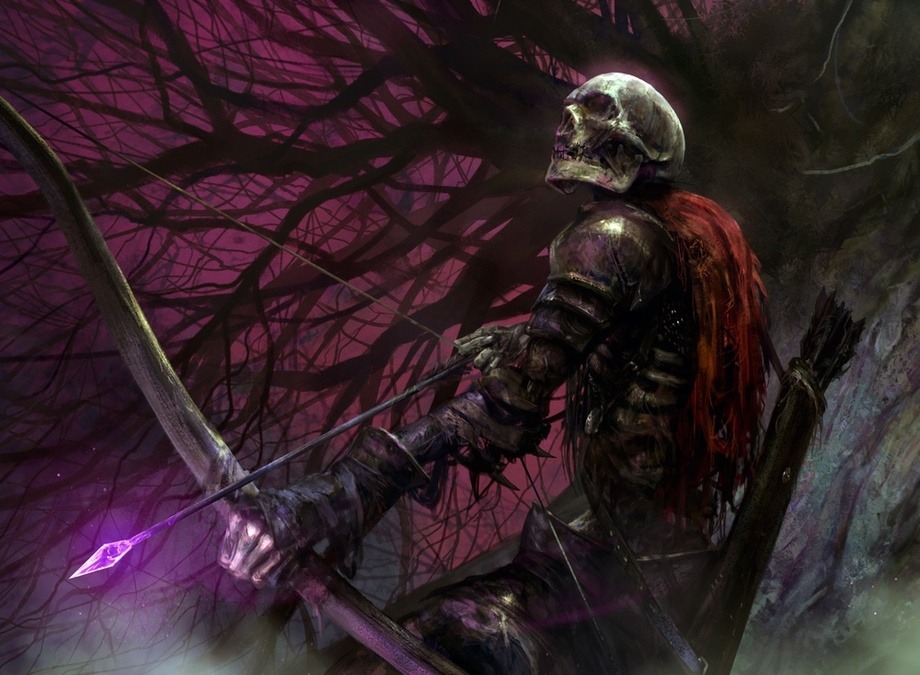
Skeleton Archer | Illustration by Randy Vargas
Skeletons may not be black’s most iconic creature type, but there’s no denying they have a unique role in the game and differ from many of the color’s traditional zombies. I love the way a lot of them are variations of the original Drudge Skeletons. They’re usually cheap with low power and toughness but stick around the battlefield one way or another.
What do you think the best skeletons are? Is Skithiryx deserving of the top spot? Do you miss regenerate as badly as I do? And what fun skeleton deck would you brew? Let me know in the comments or over on Draftsim’s Twitter.
Thanks for reading, and keep clattering!
Follow Draftsim for awesome articles and set updates: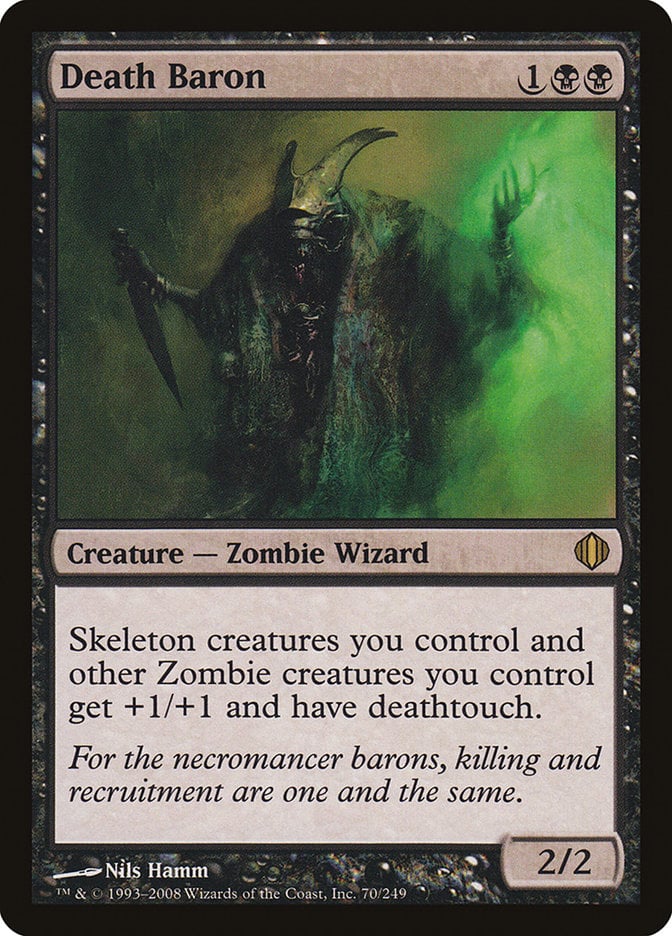
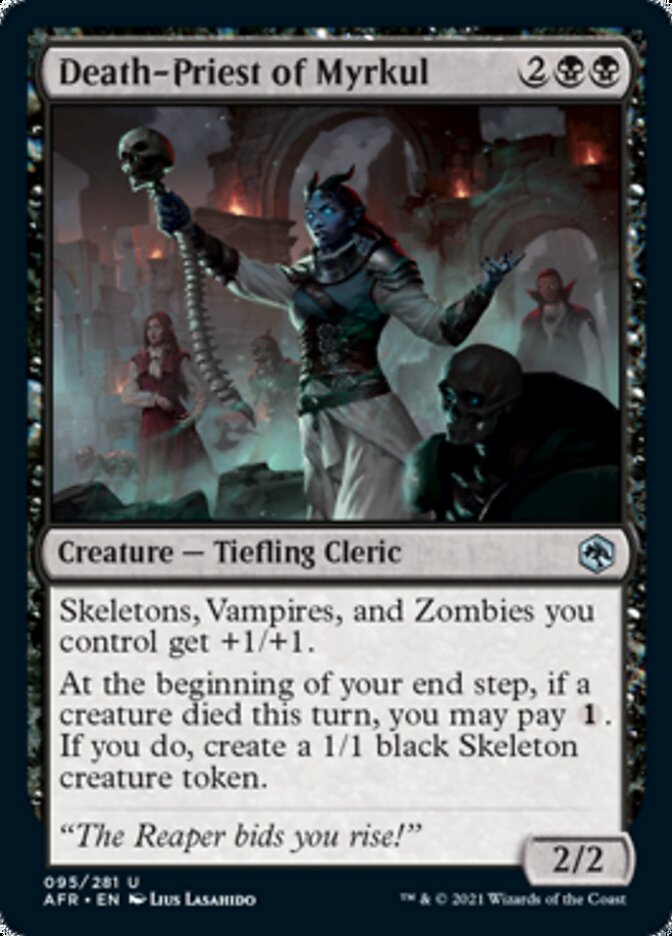
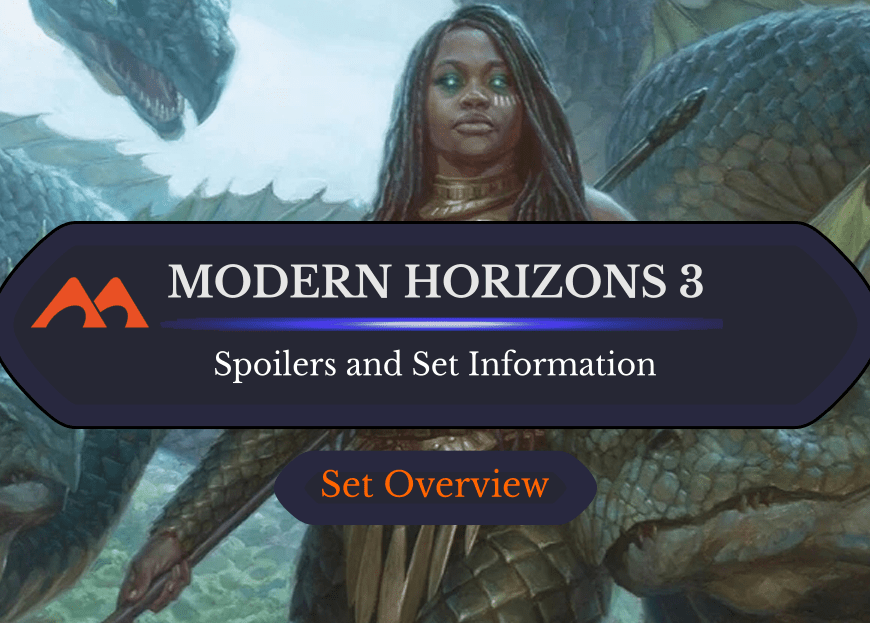

Add Comment